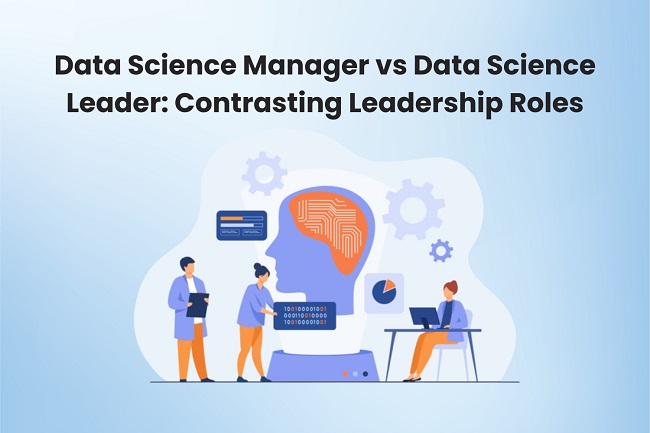In data science, managers’ and leaders’ responsibilities are crucial to guiding teams toward success. The differences between a Data Science Manager and a Data Science Leader grow more crucial when organizations go into complex data-driven decision-making. In this blog, we will discuss these contrasting leadership positions, exploring the special duties they do and the abilities that make them different.
Understanding the differences between these leadership positions is crucial for navigating the data environment, regardless of whether you’re considering using Data Science Courses to further your career or want to learn more about the dynamics of Data Science Roles.
Data Science Manager
Guiding the Team Towards Tangible Outcomes
Managing data scientists, analysts, and engineers is like conducting a symphony of data. It involves more than project management; it involves ensuring that the team’s analytical efforts complement the main business goals. Data Science Managers are responsible for bridging the gap between technological complexity and strategic objectives by turning business challenges into data science solutions. This necessitates competence in strategic thinking, effective communication, and data science approaches.
Navigating the Waters of Technical Expertise
Taking data science courses might provide people with technical abilities, but technical competence alone is not sufficient for a Data Science Manager. They must be skilled in navigating the ever-growing ocean of data science approaches and technologies, pointing their team toward the best answers. This requires a constant dedication to learning, keeping up with new developments in the field, and creating an atmosphere that promotes information sharing among team members.
Data Science Leader
Shaping the Future of Data Science within the Organisation
A Data Science Leader’s responsibilities go beyond overseeing the team’s everyday activities. It entails planning a path toward the organisation’s goal for data science and imagining it in the future. At the core, a Data Science Leader is the visionary who fosters a culture of continuous improvement and sets the standard for innovation. Technical proficiency is essential, but leadership skills like emotional intelligence, strategic thinking, and inspiring others become critical in this position.
Strategic Decision-Making and Stakeholder Engagement
Leaders in data science are often required to make critical choices that extend beyond the domains of models and algorithms. They have to manage the intricate relationship between business strategy and data science, ensuring that the insights produced affect the organisation’s bottom line. A crucial component of this is effective stakeholder engagement, which calls on leaders to explain the benefits of data science in a way that business executives and non-technical stakeholders can understand.
Blurring Lines or Clear Distinctions?
Harmony in Collaboration
Although there are apparent differences between a Data Science Manager and a Data Science Leader, it’s essential to understand that both positions often work closely together. In smaller groups or companies, a single person may wear both hats, easily switching between administrative duties and inspiring leadership. The secret is to comprehend the unique requirements of the company and adjust to the changing needs of the data science environment.
Investing in Continuous Development
Success in data science requires constant investment in learning, regardless of the exact leadership position. This entails keeping up with the most recent developments in technology and developing one’s leadership abilities via seminars, coaching, and specialised training courses. Many professionals enrol in specialised data science courses designed for leadership positions. These courses provide valuable perspectives on strategic management and help develop the soft skills necessary for successful leadership.
Investing in Cross-Functional Expertise
The distinction between administrative and leadership duties is getting more hazy in a data-driven setting. Proficient leaders understand the value of cultivating cross-functional knowledge, which enables them to connect technical teams with business stakeholders. This means being aware of the subtleties of company operations and strategy in addition to the complexities of data science. Influential leaders create a cooperative atmosphere where the organisation advances via the synergy between data science and business objectives.
Conclusion
The significance of Data Science Managers and Data Science Leaders’ responsibilities in an organisation’s performance is growing as it continues to use data. The right combination of technical know-how and leadership abilities is essential, whether steering a team through the complexities of day-to-day operations or setting the direction for the future. Knowing the subtle differences between these positions aids prospective leaders in making the best decisions and enhances the ability of data science teams to provide insightful analyses and generate strategic value.
As you begin your journey through data science courses, keep in mind that there is a wide range of opportunities, and the leadership positions that exist within them are just as varied as the data sets that are analysed.


